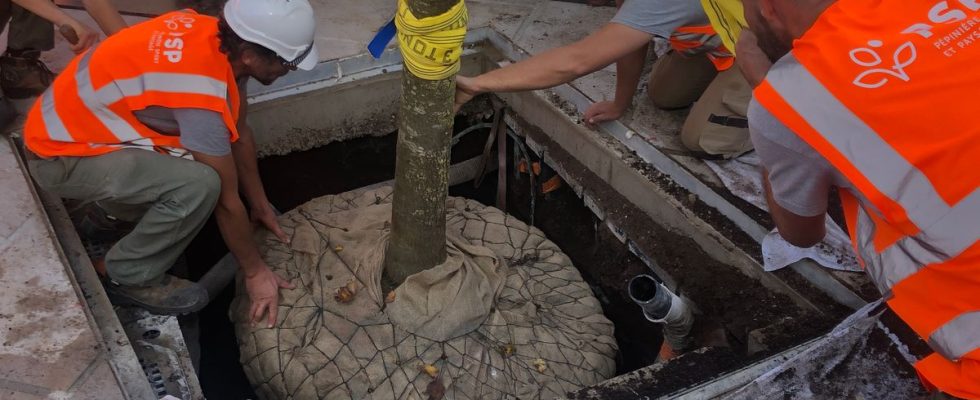When Henri Bava, founder of the Ter town planning agency, learned that the metropolis of Montpellier (Hérault) intended to plant trees on the Comédie, he was not surprised, he assures us. “But we immediately understood that it was a challenge! », he smiles. And size. The idea of Michaël Delafosse (PS), the mayor and president of the metropolis, was, in fact, to “vegetate” this reinforced concrete square, where it makes an impossible dodger in the summer. In 2019, the mercury even exceeded 46 degrees, between the esplanade and the Opera. By planting eight elm trees, the community intends to lower the temperature felt by around 6 degrees. “A tree is the equivalent of several air conditioners,” confides Michaël Delafosse. This is a way to adapt our city to climate change. »
But planting 7 to 8 meter trees in concrete is not common. And provide them with adequate conditions for them to grow, up to 12 meters high, even less. Henri Bava, the conductor of this extraordinary work, even claims to have never faced such a “constrained” environment. “But it’s the future! “, he confides.
Continuous pits, “to pool the different root systems”
The engineers in charge of this astonishing project did not place simple giant pots on the square, but dug three enormous underground pits, sacrificing a good fifty parking spaces in the Comédie car park, underground. These cavities are intended to accommodate 225 m3 of earth for the first two, and 150 m3 for the third. Whereas usually, in large cities, we only plan for around ten m3 per tree during planting. These pits will allow the eight elms to be planted, and allow them to feel (almost) like they are in the ground.
“Our idea was not to create, as is generally done, one pit per tree, but three continuous pits, to pool their different root systems,” explains Henri Bava. But a very large volume of soil is not enough for a tree to live its best life. Because “we are here in a completely confined system,” continues the town planner and landscaper. “We must therefore provide the roots with water and air, right down to the bottom of the slab. We therefore set up a system of pipes, which allows us to supply these elms with air and water. Thanks to a system of sensors, watering of the Comédie trees will, moreover, be limited to a minimum, to avoid waste, but also to “drown the roots”, and allow the trees to grow.
“A kind of stool” to prevent trees from collapsing
But a tree is heavy. Heavier still when he grows up. “If there was only earth, the risk was that the weight of the tree and its rootball would cause it to collapse, little by little,” confides Henri Bava. There is therefore a sort of stool inside the pit, made from a recyclable, porous material, which allows the roots to pass through, but supports the root ball. »
Finally, the elm was not chosen by chance. This species, symbol of the South, was selected for its solidity and its ability to grow faster than the others. It is, moreover, a very particular variety of elms, developed by researchers, which will overshadow Montpellier residents on the Comédie: these trees are capable of resisting graphiosis, a disease caused by a fungus, which decimates this historic tree in the south of France. After such a project, which annoyed Montpellier residents for months on the Place de la Comédie, it would be a shame if the elms did not survive the winter.

